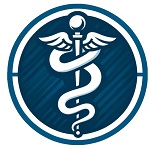Once you submit an AMCAS application, medical schools will use its information to validate it and send you secondary applications; these essays allow admissions committees to get to know you better.
These essays are tailored specifically to each school and ask more direct questions; in fact, some institutions track how long it takes you to turn in secondary essays.
AMCAS
Applying to medical school requires you to write secondary essays which allow admissions committee members to get to know you better. Essay prompts can differ depending on the school you apply to; most will cover topics like goals, interests, and experiences as well as questions about any additional materials such as transcripts of courses taken or letters of recommendation that might be needed.
Many medical schools send you secondary applications as soon as they receive your primary application from AMCAS; some even before it has been verified! This contributes to what has become known as the “secondary flood”, prompting many applicants to finish them within two weeks after receiving them.
Plan ahead when writing secondary essays to ensure they’re submitted on time by setting deadlines and tracking your application status. Doing this will prevent missing any crucial deadlines after all your hard work.
AACOMAS
Once you’ve taken and passed the MCAT, written a compelling personal statement, and meticulously entered each class and activity from your academic history into your application, secondary applications become the next big step of medical school application process. School-specific essays submitted through AACOMAS system represent one of the most in-depth parts of an application to medical school; as they’re time-consuming and stressful responsibilities of applying, so starting early is recommended for optimal results.
Most medical schools will request secondary applications once your AMCAS application has been verified, which typically occurs mid-late June. Some schools, however, may send secondary application prompts sooner – particularly if using TMDSAS or AACOMAS which transmit your application faster than AMCAS – thus it’s essential that you find past secondary application prompts online and start crafting responses early on.
As soon as you receive secondary applications, it is imperative that they are processed as quickly as possible; interview invitations could come any time between September and March during the application cycle. To keep you organized we suggest creating a spreadsheet containing all essay topics, due dates, relevant websites and log-in details in one convenient place.
TMDSAS
After medical schools receive your primary applications, they will review them and send you secondary or “supplemental ” applications containing essays used by admissions committees to learn more about applicants. Some medical schools screen candidates before sending secondary applications while others do not.
Secondary application prompts can vary between schools and provide applicants with an opportunity to demonstrate their personality and character, as well as help medical schools understand if an applicant’s mission and goals align with those of their school. It’s essential that applicants write genuine essays that express themselves clearly when making secondary applications.
If you are applying to multiple medical schools, it’s advisable to draft your secondary applications early. Doing this will save time and reduce stress during the application process; online resources offer examples of previous prompts you could use as preparation.
Direct Submission
Once your primary application has been verified, medical schools will send secondary applications with essay prompts that ask why you would make a good fit for their program. They’ll also ask for copies of coursework completed, letters of recommendation and fees; you may request waivers through the American Academy of Medical Colleges if needed.
Some schools do screen applicants before sending secondary prompts, but most don’t and send secondaries out regardless. This is likely due to medical schools having lengthy and resource-intensive processes for admissions; screening additional applicants adds another step that might add even further time and resources needed.
Prioritizing secondaries requires having a plan. Because schools tend to repeat similar questions year-after-year, you can get ahead by writing responses ahead of time for these general inquiries. Doing this allows you to tailor answers directly to each prompt received for secondary prompts.
